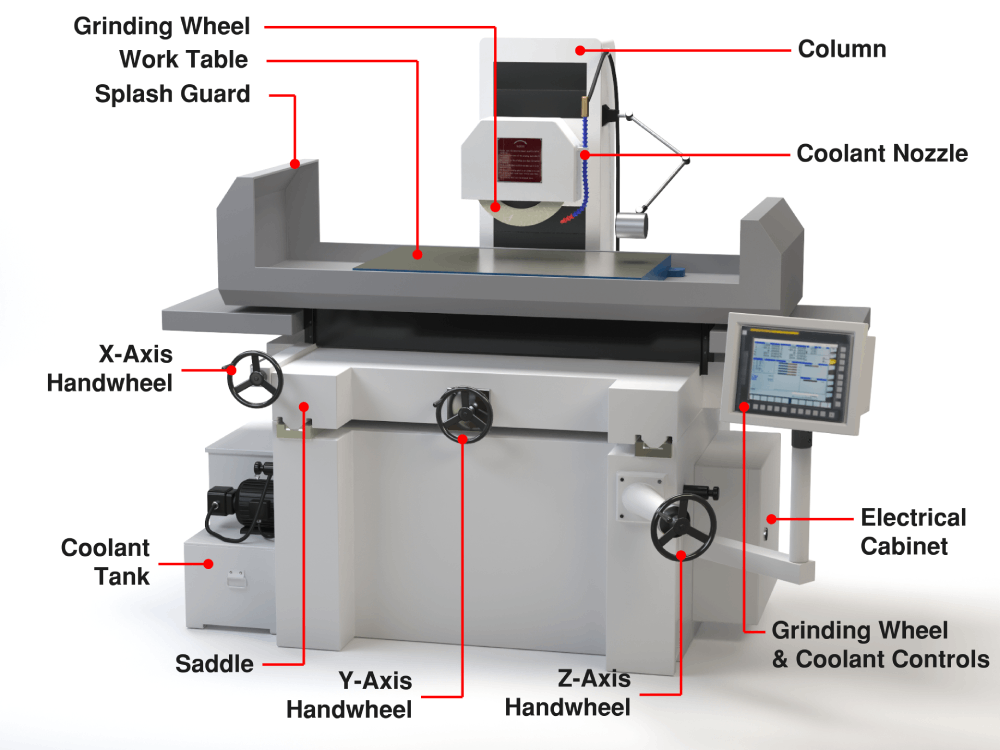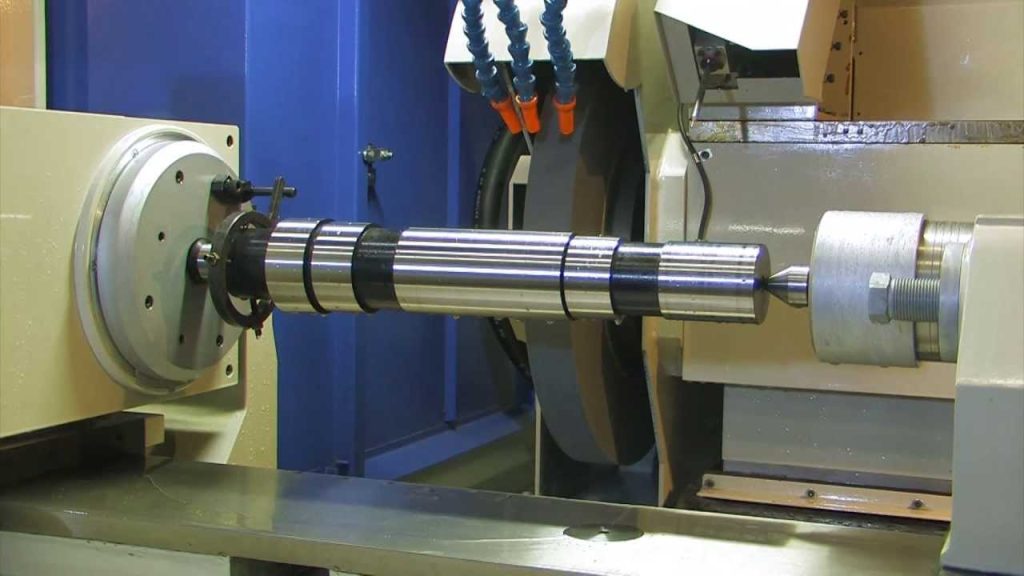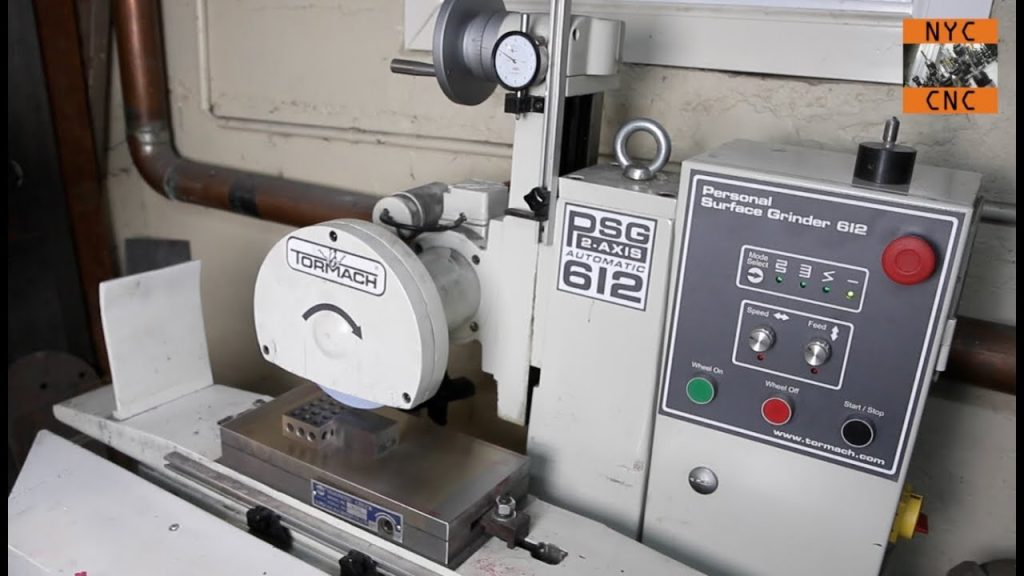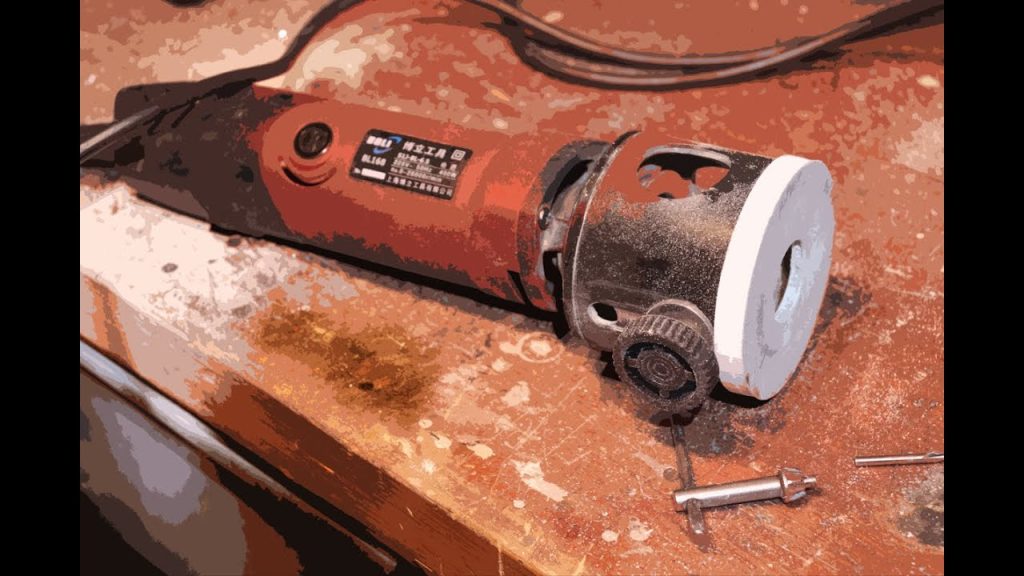Table of Contents
CNC grinders are a vital component in modern manufacturing processes. These machines use computer numerical control (CNC) technology to precisely grind and shape a range of materials, from metals and plastics to ceramics and composites. But how do they work, and what makes them so effective? In this article, we’ll explore the inner workings of a CNC grinder, from the basic components to the advanced software that controls them. So whether you’re a seasoned machinist or just curious about the world of manufacturing, read on to discover the fascinating world of CNC grinding.
A CNC grinder uses computer numerical control to grind and shape metal or other materials automatically. The grinder is operated by a computer program that controls the movements and speeds of the grinding wheel and workpiece. The process begins with the operator programming the desired shape and dimensions into the computer. The grinder then uses precision sensors and motors to move the grinding wheel across the surface of the workpiece until the desired shape is achieved.
How Does a CNC Grinder Work?
A CNC (computer numerical control) grinder is a precision tool that is used in the manufacturing industry to grind and shape metal and other materials to exact specifications. CNC grinders use computer-controlled movements to grind and shape materials, making them incredibly accurate and efficient. Here is a breakdown of how a CNC grinder works.
1. CNC Grinder Basics
A CNC grinder is a machine that uses a rotating grinding wheel to grind and shape materials. The grinder is controlled by a computer that uses a program to guide the movements of the grinding wheel. The computer program determines how much material is removed from the workpiece and how fast the grinding wheel rotates.
CNC grinders are used in a variety of industries, including aerospace, automotive, and medical device manufacturing. They can be used to grind a wide range of materials, including metals, plastics, and ceramics.
2. Types of CNC Grinders
There are several different types of CNC grinders, including surface grinders, cylindrical grinders, and tool and cutter grinders. Surface grinders are used to grind flat surfaces, while cylindrical grinders are used to grind cylindrical surfaces. Tool and cutter grinders are used to sharpen and shape cutting tools.
Each type of grinder is designed for a specific purpose, and some grinders are more versatile than others. For example, a surface grinder can be used to grind both flat and cylindrical surfaces, while a cylindrical grinder is only designed to grind cylindrical surfaces.
3. CNC Grinder Components
A CNC grinder consists of several components, including a grinding wheel, a workpiece holding device, a spindle, and a control panel. The grinding wheel is the rotating wheel that grinds the material. The workpiece holding device holds the material in place while it is being ground. The spindle rotates the grinding wheel, and the control panel controls the movements of the grinder.
CNC grinders can be very complex machines, with many different components that need to work together in order to grind a workpiece to the desired specifications.
4. CNC Grinder Programming
Programming a CNC grinder involves creating a computer program that tells the grinder how to move the grinding wheel in order to grind the workpiece. The program specifies how much material should be removed, how fast the grinding wheel should rotate, and how the workpiece should be held in place.
CNC grinder programming can be very complex, and requires a thorough understanding of the grinding process and the materials being ground. The program must be carefully designed in order to ensure that the grinder produces a workpiece that meets the desired specifications.
5. CNC Grinder Operation
Once the CNC grinder has been programmed, it can be operated by a skilled operator. The operator loads the workpiece into the grinder and sets the machine to run the programmed sequence. The grinder then grinds the workpiece according to the programmed specifications.
CNC grinder operation requires a high degree of skill and attention to detail. The operator must monitor the grinder closely to ensure that it is grinding the workpiece to the desired specifications.
6. Advantages of CNC Grinders
CNC grinders offer several advantages over traditional manual grinders. They are much more accurate and efficient than manual grinders, and can produce high-quality workpieces with very tight tolerances. CNC grinders are also much faster than manual grinders, which can save time and increase productivity.
Another advantage of CNC grinders is that they can be programmed to grind a wide range of materials, which makes them very versatile. They can also be programmed to produce complex shapes and contours, which is not possible with a manual grinder.
7. CNC Grinder Vs. Manual Grinder
While CNC grinders offer many advantages over manual grinders, there are still some situations where a manual grinder may be more appropriate. Manual grinders are often used for small-scale grinding projects, or for grinding materials that are difficult to machine with a CNC grinder.
Manual grinders are also often used for grinding custom shapes and contours that cannot be easily programmed into a CNC grinder. However, for most manufacturing applications, a CNC grinder is the best choice due to its accuracy, efficiency, and versatility.
8. Applications of CNC Grinders
CNC grinders are used in a wide range of industries, including aerospace, automotive, medical device manufacturing, and more. They are used to grind and shape a variety of materials, including metals, plastics, and ceramics.
Some common applications of CNC grinders include grinding engine components, cutting tools, and medical implants. They are also used to grind parts for the aerospace industry, such as turbine blades and engine casings.
9. Advancements in CNC Grinding Technology
CNC grinding technology is constantly evolving, with new software and hardware being developed to make the process even more efficient and accurate. Some of the latest advancements in CNC grinding technology include improved grinding wheel designs, advanced software algorithms, and more powerful grinding machines.
These advancements are helping to improve the quality and consistency of ground parts, while also reducing the time and cost of the grinding process.
10. Conclusion
CNC grinders are an essential tool in the manufacturing industry, offering unparalleled accuracy, efficiency, and versatility. They are used to grind a wide range of materials and shapes, and are essential for producing high-quality parts for a variety of industries.
While CNC grinders offer many advantages over manual grinders, there are still some situations where a manual grinder may be more appropriate. However, for most manufacturing applications, a CNC grinder is the best choice due to its accuracy, efficiency, and versatility. With advancements in technology, CNC grinders are becoming even more powerful and efficient, helping to improve the quality and consistency of ground parts.
Freequently Asked Questions
In the manufacturing industry, CNC grinders are widely used for shaping and finishing metal and other hard materials. These machines work on a highly complex system of automated movements and commands. Here are some frequently asked questions about how CNC grinders work.
How does a CNC grinder work?
A CNC grinder works by using a computer to control the movement and positioning of a grinding wheel. The wheel is attached to a spindle, which rotates at high speeds. The workpiece is mounted on a chuck or other fixture, which is moved into the path of the grinding wheel.
The computer sends commands to the machine’s motors and actuators, which move the workpiece and the grinding wheel in precise, synchronized movements. This allows the machine to remove material from the workpiece with high accuracy and repeatability, creating a finished product that meets exact specifications.
What types of materials can be ground using a CNC grinder?
CNC grinders can be used to grind a wide variety of materials, including metals, plastics, and ceramics. The machine’s high-speed grinding wheel can remove material from even the hardest materials with ease, making it an ideal tool for shaping and finishing parts for a wide range of applications.
Some common materials that are frequently ground using CNC grinders include stainless steel, aluminum, titanium, and hardened tool steels. The machine can also be used to grind non-metallic materials, such as glass or composites.
What are the advantages of using a CNC grinder?
The main advantage of using a CNC grinder is the high level of precision and accuracy that can be achieved. The machine’s computer-controlled movements and automated processes ensure that parts are ground to exact specifications every time, with no variation or deviation.
In addition, CNC grinders are highly efficient and can perform multiple operations in a single setup. This can save time and reduce the need for additional equipment or labor. The machines are also versatile and can be programmed to grind parts of varying shapes and sizes, making them a valuable tool for many different applications.
What is the difference between a CNC grinder and a manual grinder?
The main difference between a CNC grinder and a manual grinder is the level of automation and control. A manual grinder requires an operator to physically manipulate the grinding wheel and the workpiece, while a CNC grinder uses automated movements and commands to control the machine’s actions.
As a result, CNC grinders are faster, more accurate, and more efficient than manual grinders. They also require less operator skill and training, as much of the process is automated. However, manual grinders are still useful for certain applications, such as small-scale or prototype production, or for grinding parts that require a high degree of customization or manual manipulation.
What are some common applications for CNC grinders?
CNC grinders are used in a wide range of applications in the manufacturing industry. They are particularly useful for producing precision parts for the aerospace, automotive, and medical industries, where high levels of accuracy and repeatability are essential.
The machines can be used to grind a variety of parts, including engine components, gears, bearings, and tools. They can also be used to produce parts with complex shapes or features, such as turbine blades or medical implants. Overall, CNC grinders are a valuable tool for any manufacturer looking to improve the precision and efficiency of their grinding operations.
In conclusion, a CNC grinder is a highly innovative machine that utilizes computerized technology to grind and shape materials with precision and accuracy. The machine is designed to perform a wide range of grinding tasks, from rough grinding to precision finishing, making it an essential tool in the manufacturing industry.
One of the key advantages of a CNC grinder is its ability to work with a wide range of materials, including metals, plastics, and ceramics. The machine is also highly versatile and can be programmed to perform a variety of grinding tasks, making it ideal for use in a variety of industries, including aerospace, automotive, and medical device manufacturing.
In summary, a CNC grinder is a powerful and versatile machine that is essential in modern manufacturing. With its advanced computerized technology, precision grinding capabilities, and ability to work with a variety of materials, it is no wonder that the CNC grinder is widely used across the industry.
Request a quote today!
[contact-form-7 id="1578" title="Contact form"]
Please compress the file into a ZIP or RAR file before uploading. Alternatively, send through your RFQ by email.
enquires@unitymanufacture.com





